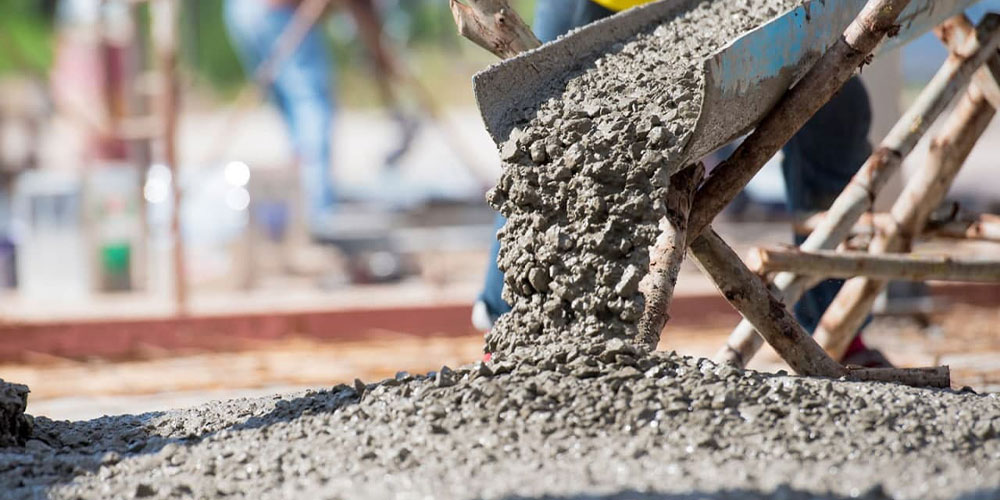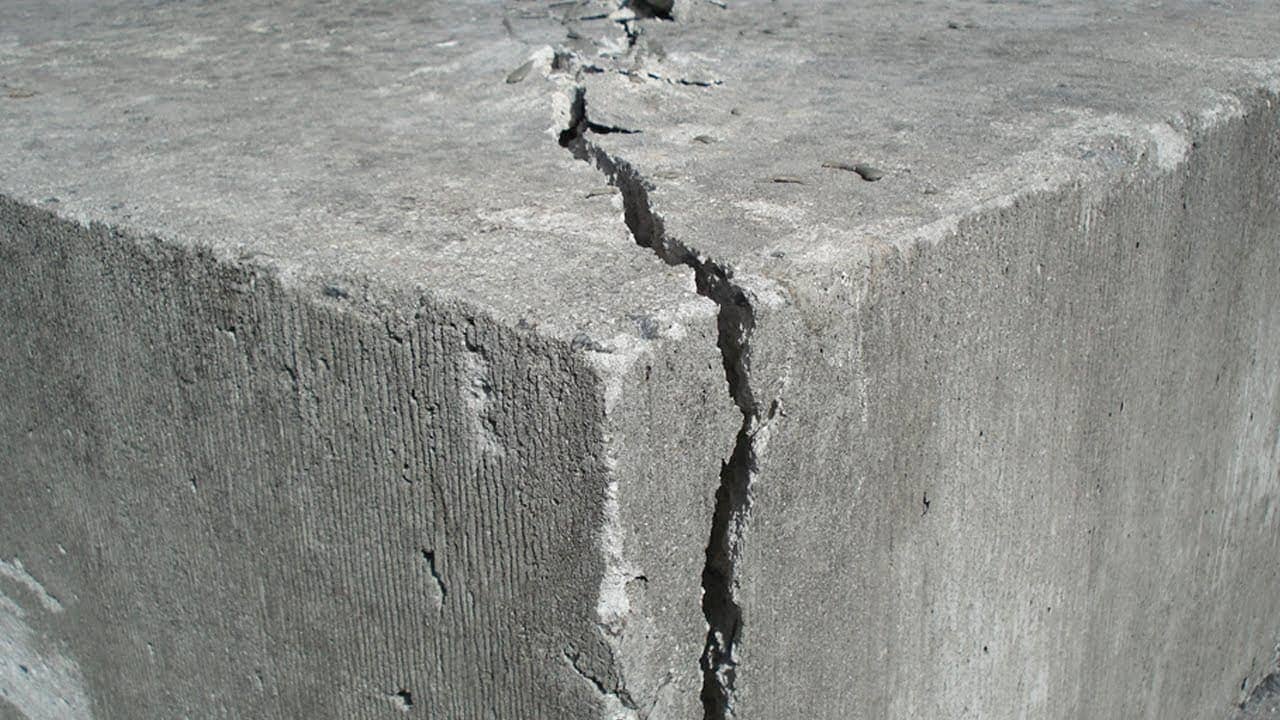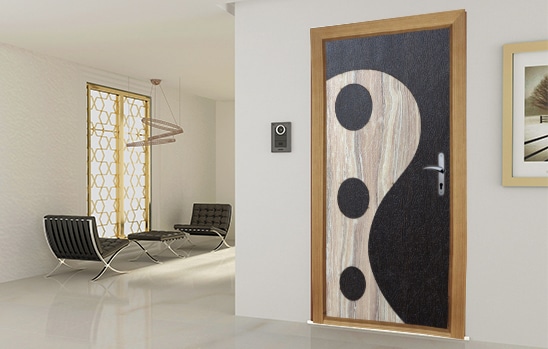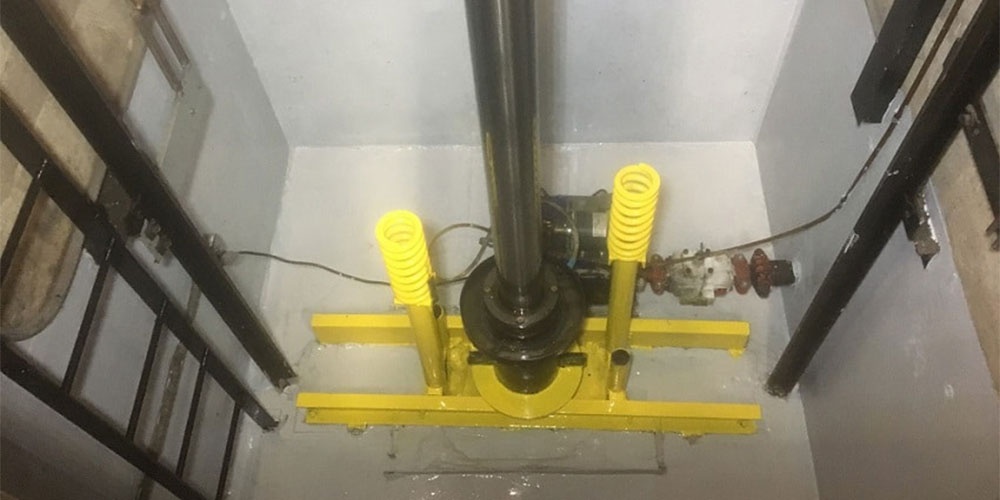After mixing a certain amount of cement, gravel, sand, and water, concrete is obtained, and in some cases, concrete additives are used.
The N50 concrete adhesive and additive product from NSG Construction Company possesses waterproofing and reinforcement properties. Additionally, it contains superplasticizer and antifreeze components to some extent.
After the cement and materials are added together, they undergo a process that generates heat. In this process, a binding substance is formed that links the various components together and hardens into a solid mass. Due to the availability of concrete materials such as gravel, sand, and water, which are found in most areas, concrete can be produced at a low cost.
Concrete Curing:
One of the methods of concrete curing is concrete curing itself. Proper curing of concrete significantly affects the strength of the structure.
Methods of Concrete Curing:
1.Concrete Curing by Spraying Water Method
2.Concrete Curing with the Nylon Method
3.Concrete Curing by Immersion Method
Objectives of Concrete Curing:
1.Preventing the loss of moisture
2.Maintaining Concrete Temperature
3.Increasing Concrete Strength
Types of Concrete Additives:
The additives enhance the properties of concrete and also affect the final setting time, workability, and tensile strength of the concrete.
✅Chemical Additives
✅Superplasticizer Additive
This additive, known as the super plasticizer SH7, is a thick, brown liquid that is chlorine-free and possesses properties for lubrication, reducing water in concrete, and dispersing cement particles. It is designed to improve the quality and efficiency of concrete without compromising its strength, thereby maintaining its cohesion. Additionally, this additive is water-based and is produced using nanotechnology.
✅accelerating additive
Accelerators improve the properties of concrete in cold weather and increase the rate of cement hydration.
✅Retarder additive
The retarders are used to control the setting time of mass concrete in areas with hot climates.
✅Aeration Additive
These materials create small, discontinuous air bubbles in the concrete when mixed, enhancing the performance of the concrete during freezing conditions. Air-entraining agents are primarily used in mixtures that contain coarse or lightweight aggregates and have lower amounts of cement and water. These types of additives are utilized in the production of lightweight and massive concrete. It is also worth mentioning that air-entraining agents improve the stability of the concrete.
✅Colorant Additive
If we want to change the color of the concrete, we use this additive.
✅Mineral Additives
These additives, due to the use of recycled materials, not only do not harm the environment but also reduce the costs of concrete production.
✅Fly Ash Additive
The properties and characteristics of this additive depend on the amount of coal consumed. Additionally, due to the generation of greenhouse gases, fly ash is used instead of Portland cement because it enhances its properties several times over and does not harm the environment.
✅Additive of Carbon Nanofibers
This additive is used to enhance the compressive strength and other properties of concrete. Carbon fibers possess high tensile strength and conductivity, which improve the electrical and mechanical properties, de-icing capabilities, and conductivity of the concrete.
✅Silica Fume Additive
This additive is produced from electric arc furnaces during the production of silicon and ferrosilicon alloys. The particles of this material are much smaller compared to fly ash. Additionally, this substance enhances the stability and strength of concrete, but to improve the workability of the concrete, the superplasticizer SH7 is required.
✅Volcanic slag additive
This additive has hydraulic properties and can be used as a substitute for Portland cement.
✅Reactive metakaolin additive
This additive is used for producing light-colored concrete, enhances the strength of the concrete, and is applied in places where the appearance of the structure is important.
Disadvantages of Concrete:
The low tensile and compressive strength are major drawbacks of concrete, which can be addressed by using P.P fibers and N50 concrete adhesive and additives. Additionally, concrete can be reinforced.
Cracks in concrete occur for various reasons, and there are different methods to address them. Generally, cracking in concrete occurs in two stages:
1.Cracking before the concrete sets
2.Cracking after concrete hardening
Causes of Cracking in Concrete:
- Movement of rebar during the initial hours of concrete pouring
- Plastic settlement occurring up to three hours after pouring
- Loss of concrete durability due to shrinkage and drying
- Thermal contraction
Types of Concrete:
🔶Ordinary Concrete
Ordinary concrete is composed of water, Portland cement, sand, and aggregates.
🔶Lightweight Concrete
Lightweight concrete is made from aggregates such as pumice, clay, pumice stone, etc. Due to its lightweight nature, it is one of the most practical types of concrete for constructing building blocks and flooring. One of the characteristics of lightweight concrete is its low thermal conductivity.
🔶Heavy Concrete
As the name suggests, heavy concrete is denser than other types due to the use of iron, steel scrap, and barium sulfate. This type of concrete is used in nuclear power plants where resistance to radiation is necessary.
🔶Reinforced Concrete
Reinforced concrete is used to prevent destruction and cracking under tensile forces. This type of concrete incorporates reinforcing and tensile steel bars, metal plates, mesh grids, and P.P reinforcing fibers. (P.P fibers are glass-like fibers made from polypropylene chips that enhance tensile and flexural strength, preventing surface and deep cracks in the concrete and structure.)
🔶Glass or Transparent Concrete
In glass or transparent concrete, in addition to the mentioned materials, a glass additive is included. It is used in flooring, interior design of buildings, walls, and blocks.
🔶Asphalt Concrete
Asphalt concrete is used in road construction in a hot form and consists of crushed and graded aggregates along with a filler.
🔶Lime Concrete
In lime concrete, lime is used instead of cement, with its primary applications being in domes and arches.
🔶Roller-Compacted Concrete
Roller-compacted concrete is formed by compacting the materials with a roller at an appropriate water content. It has special applications in dam construction and road building.
🔶Self-Compacting Concrete
Self-compacting concrete uses a superplasticizer SH7 alongside conventional materials, eliminating the need for vibration or shaking. Its high strength and flowability are among its most important features.
🔶Stamped Concrete
Stamped concrete is used in sidewalks, garages, and areas where aesthetic appearance matters.
🔶Polymer Concrete
In polymer concrete, polymers replace cement, enhancing the adhesion of the concrete components.
🔶Shotcrete
Shotcrete is a type of ordinary concrete used in complex or difficult structural areas. There are three types of shotcrete: wet shotcrete, dry shotcrete, and fiber-reinforced shotcrete.
🔶Sponge Concrete
Sponge concrete has pores that allow water to easily pass through it.
🔶Ready-Mix Concrete
Ready-mix concrete is prepared in a factory and transported to the desired location by a mixer truck. Since this concrete is pre-prepared, attention must be paid to delivery time (if delivery takes too long, the concrete will harden).
🔶Precast Concrete
Similar to ready-mix concrete, precast concrete is molded and manufactured in a factory and transported to the site using heavy machinery. It is used in bridge construction, multi-story parking lots, and building projects.
🔶Prestressed Concrete
In prestressed concrete, reinforcement bars are tensioned due to high resistance in structures that bear tensile forces. It is used in constructing heavy structures such as bridges, overpasses, and roofs. Feel free to ask if you need any further assistance!








